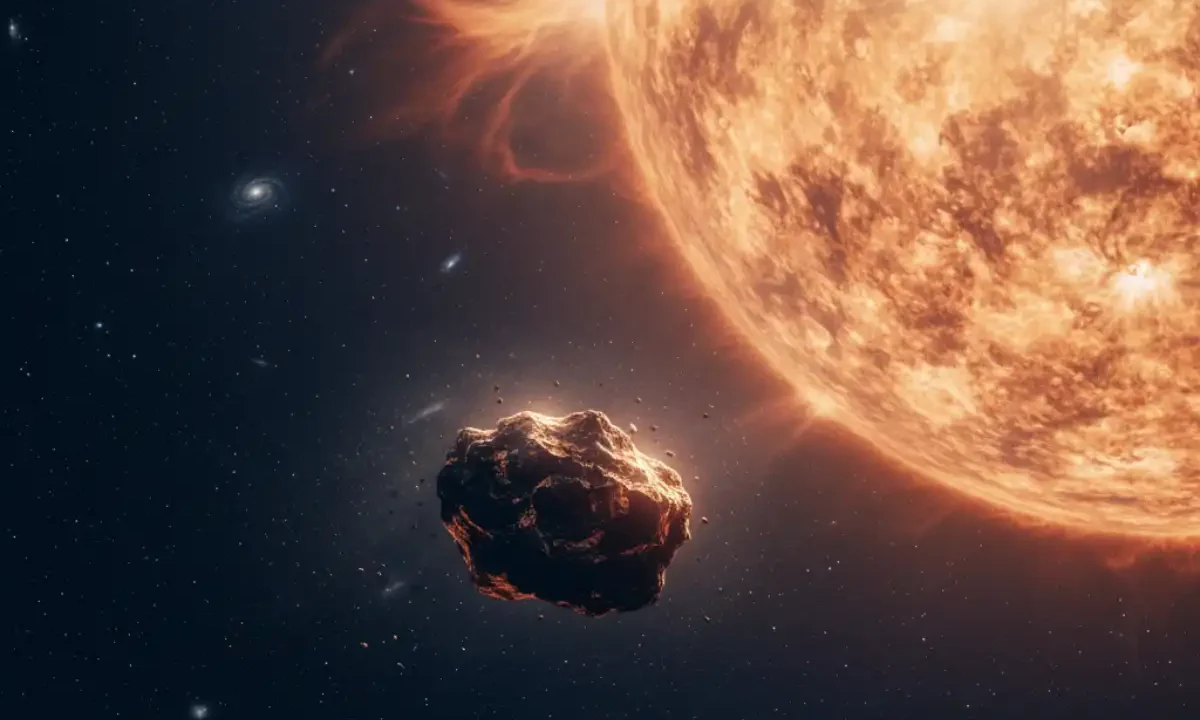| Summary |
|
Astronomers have discovered a rare, fast-moving asteroid orbiting deep within the inner solar system. The object, named 2025 SC79, was detected in October 2025 by the ATLAS sky survey, with observations led by Scott S. Sheppard of Carnegie Science. The asteroid, roughly 700 meters wide, completes one trip around the sun every 128 days, making it the second-fastest asteroid ever recorded, behind only 2021 PH27.
The find is remarkable because asteroids this close to the sun are hard to detect. For years, 2025 SC79 remained hidden in the glare of sunlight, its faint reflection drowned out by the star it orbits. Researchers were able to spot it only thanks to ATLAS’s sensitive telescopes in Chile, which scan the sky for objects that could pose a threat to Earth.
Most asteroid-hunting telescopes avoid pointing near the sun because of its brightness. However, ATLAS and similar systems are built to peer into what scientists call the “twilight zone,” a region of space where few objects are visible from Earth.
2025 SC79 belongs to a rare group called Atira asteroids, objects that never travel beyond Earth’s orbit. Their entire paths lie closer to the sun, under 1 astronomical unit. Because of their proximity, these asteroids are among the hardest to find and study.
While Venus takes 225 days to complete a solar orbit, 2025 SC79 finishes in nearly half that time. Its path lies mostly within Venus’s orbit, looping tightly around the sun. At its closest point, it moves at about 60 kilometers per second. That speed, driven by the sun’s strong gravity, makes it one of the fastest natural objects in our solar system.
The only known asteroid with a shorter orbit is 2021 PH27, which circles the sun in just 113 days. Both are part of an extremely small group of inner asteroids that help scientists understand how rocky material behaves so close to the sun.
Asteroids like 2025 SC79 may have formed closer to the sun than most, or they might have been knocked inward after collisions in the asteroid belt. Studying their orbits helps scientists trace how gravity and planetary interactions shape the solar system over billions of years.
Despite their tight orbits, these asteroids pose no threat to Earth. Their paths remain well inside our planet’s orbit, where they stay locked in the sun’s gravitational grip. However, tracking them improves models that predict the movement of other near-Earth objects.
The discovery also highlights progress in detecting asteroids near the sun. Upcoming missions such as NASA’s NEO Surveyor, set to launch later this decade, will scan deeper into this region using infrared sensors that can detect heat instead of reflected light.
Scientists expect to uncover dozens more Atira asteroids in the next few years. Each new find fills in part of the picture of how planets and smaller bodies formed in the solar system’s earliest days.

